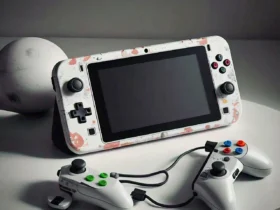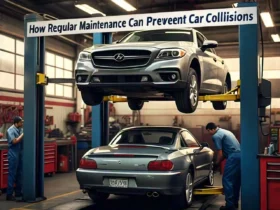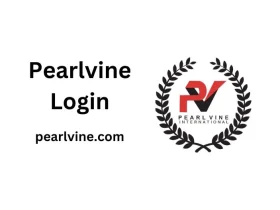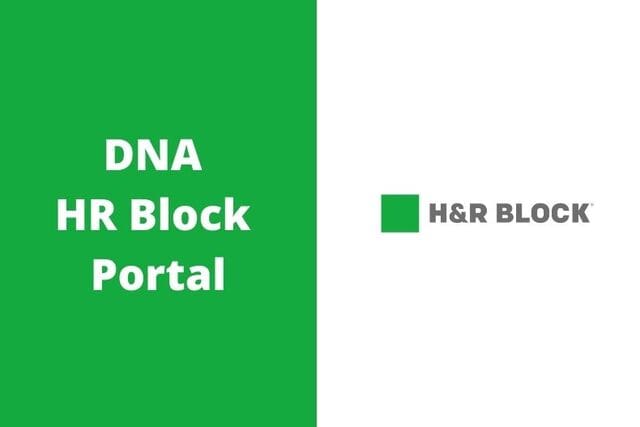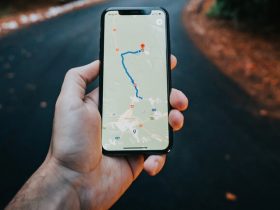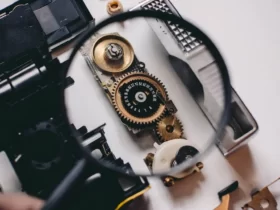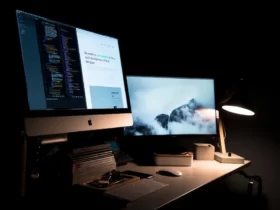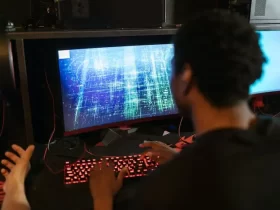Are you looking to redecorate your home or office and wondering if your LED lights can be reused after taking them off? If so, I have some good news for you! LED lights are versatile and can be effectively reused, giving you the opportunity to redesign your space without having to invest in new lighting fixtures. In this blog post, I will explore the question of whether LED lights can be reused and provide you with tips and solutions for reusing your LED lights effectively. So, if you want to learn how to give your space a fresh new look with your existing LED lights, keep reading!
Can You Reuse LED Lights ?
The short answer is yes, you can reuse LED lights in different ways. LED lights can be repurposed and reused in various DIY projects, such as creating a unique lighting fixture, or even adding a pop of color to your bike or skateboard or moving to a new house, or replacing damaged lights.
Before reusing LED lights, you must know all the possible ways to peel them off. Although, LED lights have strong adhesive bond with the wall. Its possible to remove them from the walls or cabinets etc. Underlying mentioned processes will guide how can you remove LED lights efficiently without damaging the walls and lights.
How to Remove LED Strip Lights?
There are several ways to remove LED lights from walls, and the method you choose will depend on the type of fixture and how it is attached to the wall. Here are some possible ways to remove LED lights from walls, along with detailed descriptions of each method;
Removing LED Strip lights with Screwdriver
There are different ways to stick LED light strips to the wall without the adhesive. If the LED light fixture is screwed into the wall, you can remove it by using a screwdriver to loosen and remove the screws. I’ve listed down all necessary steps which you must follow as a minimum;
- Turn off the power supply: Before starting the removal process, it’s essential to turn off the power supply to avoid any electrical shock or damage to the light fixture.
- Gather necessary tools: To remove LED lights, you will need a screwdriver set, a ladder, and a container to keep screws safe.
- Locate the screws: Most LED lights have screws that hold them in place. Locate these screws by inspecting the light fixture.
- Remove screws: Using a screwdriver, gently unscrew the screws holding the light fixture in place. Make sure to hold the fixture with your free hand to prevent it from falling.
- Detach the light fixture: After unscrewing the screws, detach the light fixture from the wall by gently pulling it away from the wall. Be careful not to damage the electrical wires connected to the fixture.
- Disconnect the wires: Using pliers, carefully disconnect the wires attached to the light fixture. Take note of the wire’s color and location to reconnect them correctly when reinstalling.
- Remove mounting bracket: If there’s a mounting bracket, remove it from the wall using a screwdriver.
- Clean the wall: After removing the light fixture and mounting bracket, clean the wall to remove any dust, debris, or residue left behind.
Precautions
- Make sure to turn off the power supply to the light fixture before removing it.
- Use a stable ladder and avoid overreaching to prevent falls or injuries.
- Always wear protective gloves to avoid any electrical shock.
- Handle the light fixture and screws with care to avoid damaging them.
- When disconnecting wires, be mindful of their color and location to reconnect them correctly.
Removing LED Light Strips If They Are Attached to The Wall With Adhesive
Condition can get worse if LED lights are attached to the wall with adhesive. If not properly handled, removing strip lights can result in damaging the walls and LED lights. I will describe five different ways to remove LED lights from the walls if they are attached to the wall with the help of adhesive.
Using Heat Gun
You can use a heat gun to soften the adhesive. Hold the heat gun about 6 inches away from the adhesive and move it around to warm the surface. Be careful not to overheat the adhesive, which could cause it to become brittle
Using Hair Dryer
A hairdryer can also be used to soften the adhesive. Hold the hairdryer a few inches away from the adhesive and apply heat to warm it up. Move the hairdryer around the surface until the adhesive becomes pliable.
Using Putty Knife
If the fixture is attached to the wall with adhesive, you can use a putty knife to gently pry the fixture away from the wall. Start by inserting the putty knife between the fixture and the wall, and then gently apply pressure to loosen the adhesive. Be careful not to damage the wall or the fixture.
Using Vinegar
Vinegar is a natural adhesive remover that can help soften LED adhesive. Soak a cloth in vinegar and place it over the adhesive. Leave it there for about 15-20 minutes, then try to remove the LED light fixture. If it still doesn’t come off, repeat the process.
Using Adhesives
There are adhesive removers available in the market that can help soften and remove LED adhesive. Apply the adhesive remover to the adhesive and let it sit for a few minutes. Then, use a putty knife or scraper to remove the adhesive. I have compiled following list of some of the best available adhesive removers. You can try any of them to remove LED lights.
Five Best Adhesive Removers:
- Goo Gone: Goo Gone is a popular adhesive remover that can be used to remove LED adhesive. It’s made with citrus oils and is safe to use on most surfaces.
- 3M Adhesive Remover: This adhesive remover is designed to remove tough adhesive residues left behind by 3M tapes and films. It can be used on many surfaces, including painted surfaces, plastics, and glass.
- Goof Off: Goof Off is a heavy-duty adhesive remover that can be used to remove LED adhesive. It’s formulated to remove a wide range of adhesives, including tough adhesive residues.
- Krud Kutter Adhesive Remover: Krud Kutter Adhesive Remover is a solvent-based adhesive remover that can be used to remove LED adhesive. It’s designed to dissolve adhesive residues quickly and easily.
- Duck Adhesive Remover: Duck Adhesive Remover is a solvent-based adhesive remover that can be used to remove LED adhesive. It’s designed to remove adhesive residues from many surfaces, including walls, floors, and furniture.
Precautions
Here are some precautions you should take if you have to remove LED lights from the wall which are attached to the wall with the help of adhesive;
- Turn off the power: Before starting the removal process, it’s essential to turn off the power supply to avoid any electrical shock or damage to the LED light fixture.
- Wear protective gear: Wear protective gloves and goggles to avoid any injury while removing the LED light fixture.
- Test the adhesive: Test the adhesive by gently trying to remove the LED light fixture with your hand or a putty knife. If it doesn’t come off easily, use one of the methods mentioned earlier to soften the adhesive.
- Apply adhesive remover carefully: If you’re using an adhesive remover, follow the manufacturer’s instructions carefully, and wear protective gear. Apply the adhesive remover to the adhesive and let it sit for a few minutes before attempting to remove the LED light fixture.
- Gently remove the LED light fixture: Once the adhesive is softened, gently remove the LED light fixture by prying it away from the wall with a putty knife. Be careful not to damage the fixture or the wall surface.
- Disconnect the wires carefully: Using pliers, carefully disconnect the wires attached to the LED light fixture. Take note of the wire’s color and location to reconnect them correctly when reinstalling.
- Clean the wall: After removing the LED light fixture, clean the wall to remove any dust, debris, or residue left behind by the adhesive.
Can LED Strip Lights Be Sticky Once Again After Removing?
Yes, LED strip lights can be sticky once again. If the adhesive on the back of the LED strip lights has lost its stickiness, you can restore it by applying a new adhesive. Besides, there are other ways to stick LED lights without the adhesives. You can try those methods to stick LED light strips again.
Conclusion
While some LED lights can be reused, others are designed for single use only. Additionally, the process of reusing LED lights requires technical know-how and equipment, which may not be feasible or cost-effective for everyone.
However, it’s worth considering the bigger picture when it comes to LED light reuse. The environmental impact of discarding millions of LED lights every year is significant. By reusing and repurposing these lights, we can reduce the amount of waste we produce and contribute to a more sustainable future.
So, while LED light reuse may not be the easiest or most convenient option, it’s an important one to consider. By taking steps to reuse our LED lights, we can not only save money but also reduce our impact on the environment. Let’s all do our part to create a more sustainable future for ourselves and generations to come.
Frequently Asked Questions (FAQs)
Is It Safe to Reuse LED Lights?
Yes, it is safe to reuse LED lights as long as they are in good working condition and have not been damaged during removal. It is important to follow proper installation procedures and to ensure that the lights are compatible with the new location and power source.
What Should I Do If My LED lights are Damaged During Removal?
If your LED lights are damaged during removal, it may not be safe to reuse them. It is important to inspect the lights carefully and replace any damaged components before attempting to reuse them. If in doubt, it is best to purchase new LED lights.
How to Pack LED Strip Lights for Moving?
To pack LED strip lights for moving, first remove them from their original location and disconnect the power source. Coil the lights neatly and secure them with twist ties or tape. Place the coiled lights in a box and fill any empty space with packing material, such as bubble wrap or packing peanuts, to prevent shifting and damage during transit. Label the box clearly as “fragile” or “LED lights” to ensure careful handling during the move.
